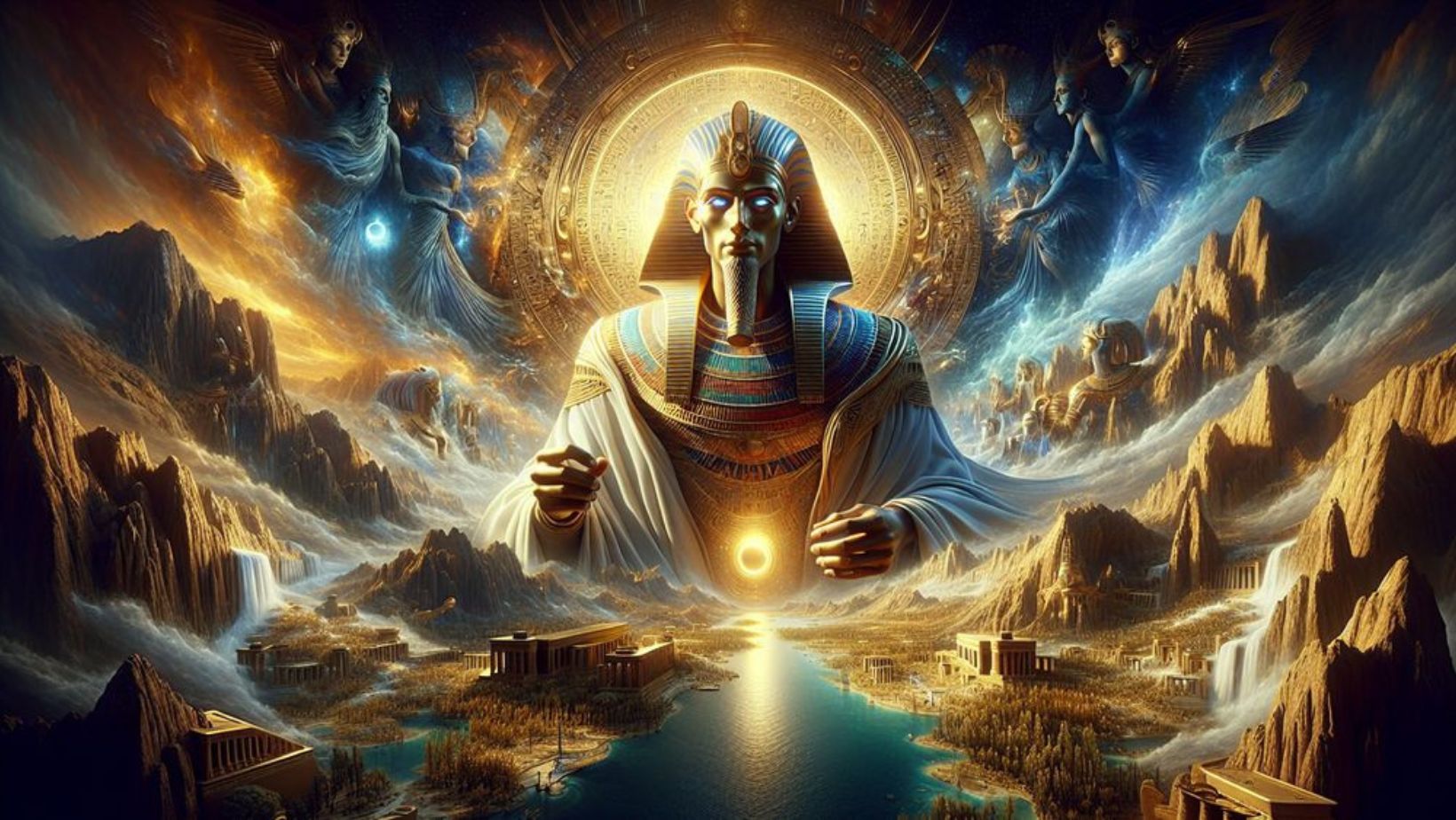In the misty depths of time, before the world as we know it came to be, there was a god who emerged from the swirling chaos to create all that exists. This is the story of Atum Creation Myth, the primordial creator god of ancient Egypt.
Atum’s tale is one of the most captivating creation myths in history, weaving together themes of self-creation, divine power, and the eternal cycle of life. It’s a story that shaped the very fabric of ancient Egyptian religion and culture.
So, let’s take a journey back to the beginning, to the moment when Atum first stirred in the dark waters of Nun, ready to bring forth the universe and all its wonders.
Table of Contents:
The Atum Creation Myth of Ancient Egypt

The Atum creation myth was one of the most important creation stories in ancient Egyptian religion and mythology.
This myth held immense significance in ancient Egyptian religion.
The Atum creation myth tells us about Atum, the ultimate creator god who made everything in the universe happen. He is credited with creating other gods and shaping all parts of our world.
Atum’s Role as the Primordial God
According to the myth, Atum first appeared as a mound rising from the chaotic primordial waters known as Nun. Atum’s emergence from Nun marked the beginning of the creation process and established him as the primordial god.
One of the key aspects of the Atum creation myth is the concept of self-creation. Atum was said to have created himself by uttering his own name, thus bringing himself into existence.
Atum was often depicted as the primordial living being, embodying the essence of life itself. He was associated with the life-giving power of the sun and the eternal cycle of death and rebirth.
The Creation of the Gods and the World
In the next stage of creation, Atum produced the divine couple Shu (god of air) and Tefnut (goddess of moisture) from his own body. The creation of Shu and Tefnut represented the emergence of the first differentiated elements from Atum’s primordial unity.
Shu and Tefnut then gave birth to Geb (the earth god) and Nut (the sky goddess).
From the offspring of Geb and Nut, other major Egyptian gods came into being, including Osiris, Isis, Seth, and Nephthys. The emergence of these gods completed the Ennead, the nine primordial deities of Heliopolis, with Atum at its head.
Atum’s Manifestations and Symbols
Atum was closely associated with the god Khepri, who was depicted as a scarab beetle. Khepri represented the morning sun and the concept of rebirth and regeneration.
Atum was also associated with the sun at its zenith, representing the peak of the sun’s power and the fullness of creation. The midday sun symbolized the completion of the creative cycle and the maintenance of cosmic order.
This symbolized Atum’s role as the divine ruler and unifier of the two lands.
The Significance of the Atum Creation Myth in Ancient Egyptian Culture
The Atum creation myth had a profound influence on ancient Egyptian religious beliefs. It established Atum as the supreme creator god and provided a framework for understanding the origins of the universe and the role of the gods in maintaining cosmic order.
The Atum creation myth was recorded in several important ancient Egyptian texts, including the Pyramid Texts, the Coffin Texts, and the Book of the Dead. The presence of the myth in these texts underscores its importance in ancient Egyptian religious beliefs.
The Atum creation myth shaped ancient Egyptian cosmology and influenced various aspects of daily life.
Key Takeaway: Atum Creation Myth
The Atum creation myth explains how the god Atum emerged from chaos to create the universe and all life. It shows his role as a self-created deity who brought forth other gods, establishing cosmic order.
Conclusion: Atum Creation Myth
The Atum creation myth is a testament to the enduring power of storytelling and the human desire to understand our origins. Through this ancient tale, we catch a glimpse of how the Egyptians saw the world and their place within it.
Atum, the self-created god who emerged from chaos, embodies the very essence of creation itself. His story reminds us that even in the darkest, most tumultuous times, there is always the potential for new life and new beginnings.
So the next time you look up at the sun, remember Atum, the primordial creator god of ancient Egypt. In his story, we find not just the origins of the universe, but a reflection of our own endless capacity for creation, transformation, and renewal.